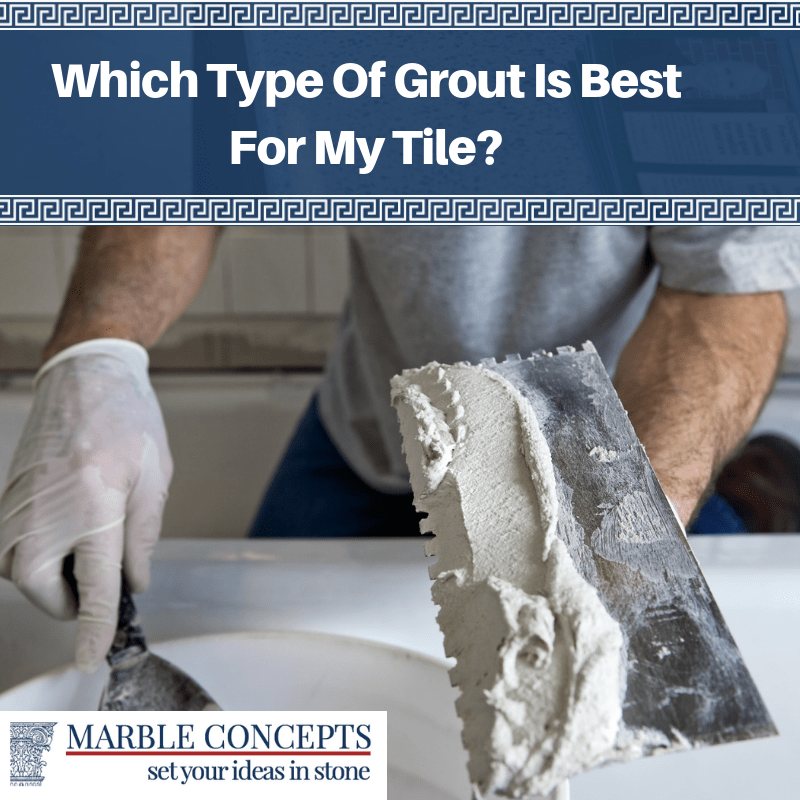When we think about grout, what usually comes to mind is how difficult it stereotypically is to clean, and how it’s really just “the stuff that holds tile in place”. Only professional contractors, home decorators and materials experts are generally aware of how important grout is, and how many varieties of grout there really are.
The thing is, usually, clean-well-done grout goes unnoticed, the tile they serve capturing the attention of all whom behold it. This is the goal, of course. Unfortunately, when grout is dirty, or done wrong, you can’t really notice anything but this badly-done, damaged and gross spectacle.
Today, we’re going to look at the three basic types of grout commonly used, weigh their pros and cons, and cite where each one is best used. You’ll be surprised at how intricate the science and importance of grout can be. Just as there are countless types of tile, styles of tile and applications, there are nearly as many factors to consider with the grout holding that tile in place.
You’ll want to think long and hard when choosing your grout, as undoing a poor choice is costly and labor intensive, fail to mention quite embarrassing in most cases!
Cement Grout
This is unsurprisingly the most common and most ancient form of grout, requiring no advanced modern synthetic materials to produce. It hasn’t really evolved much over the years aside from high performance polymer cement grouts coming along (which are often overkill).
It can either be sanded or unsanded, with sanded having 1/8” or larger grit, unsanded having less.
Sanded grout is actually more widely used, especially for residential homes where less wear and tear occurs, and is of course a bit more affordable and easier to apply. Unsanded grout holds up longer against more erosive stimuli, which is why it’s more commonly used in public applications where higher traffic can affect it.
The most demanding applications for cement grout call for high performance polymer varieties which erode less quickly, are less porous and absorbent, and are difficult to vandalize as well. These are expensive, somewhat difficult to work with and should honestly not be used in residential or lower-demand public spaces.
Cement Grout Pros:
- Works indoors and outdoors.
- Very easy to use.
- Works for most grout joint widths.
- Sets quickly.
- Costs less than epoxy.
- Can be sealed easily.
Cement Grout Cons:
- Vulnerable, and can deteriorate when exposed to alkaline or acidic compounds.
- Can discolor.
- Is susceptible to efflorescence.
- Not very stain resistant.
- Requires a lot more tools to work with, and degrades the tools quickly.
- Porous, absorbs unpleasant things.
Epoxy Grout
Epoxy grout couldn’t exist until more sophisticated synthetic materials came along, but it’s become the industry standard most of the time. It has a lot of advantages, such as a consistency that matches most environment applications, is resistant to a lot of stimuli which degrade cement grouts, it’s affordable and long-lasting.
It comes in a couple varieties (two-part mix) and 100% solid. 100% solid is more durable and hardy, making it best suited for stressful climates like kitchens, bathrooms or outdoors in regions with severe weather.
Epoxy Grout Pros:
- Not porous, resists mildew etc.
- Resists stains and damage.
- Cleans easily.
- Chemical-resistant.
- Resists harsh climates and conditions (great for industrial locations).
- Consistent in color.
- Less expensive to maintain.
Epoxy Grout Cons:
- Can be compromised by sealants.
- Requires precise mixing.
- Sets quickly, limiting working time.
- Can yellow in UV light.
- Costlier than cement.
- Can be more time consuming to apply.
- Can degrade if exposed to some harsh chemicals.
Single Component Grouts
These are not to be mistaken for 100% solids epoxies despite not requiring mixing. These are usually acrylic or urethane compounds. Like epoxy, it doesn’t effloresce, it’s durable, less permeable than cement, and less difficult on tools.
Like epoxy as well, it sets quickly and is more time consuming to apply (though doesn’t entail the complex, precise formulation of epoxy). It’s famously easier to use than epoxy, though in many cases, it’s been considered less durable and diverse than epoxy, though there’s no hard data to prove this claim.
Single Component Grout Pros:
- Not porous – resists mildew etc.
- Resists stains and breakage.
- Cleans easily.
- Resists chemicals.
- Easier to deal with than cement or epoxy.
- Consistent in color.
- Less costly than cement to maintain.
Single Component Grout Cons:
- Compromised by some sealants.
- Doesn’t work with irregularly-shaped tile.
- Doesn’t like steam or being submerged.
- Doesn’t like heat or cold during installation.
- Is costlier than cement to apply.
- Can take time to apply.
- Can be degraded by industrial chemicals.
Conclusion
So, which grout is ideal for your needs? It depends on your tools, budget and climate. Some of these fit just about anywhere, others are easier on budgets, some have serious weaknesses that may come back to haunt you if you don’t consider the climate your grout will endure.
To learn more about grout and tile, fill out our contact form below to stay informed!






